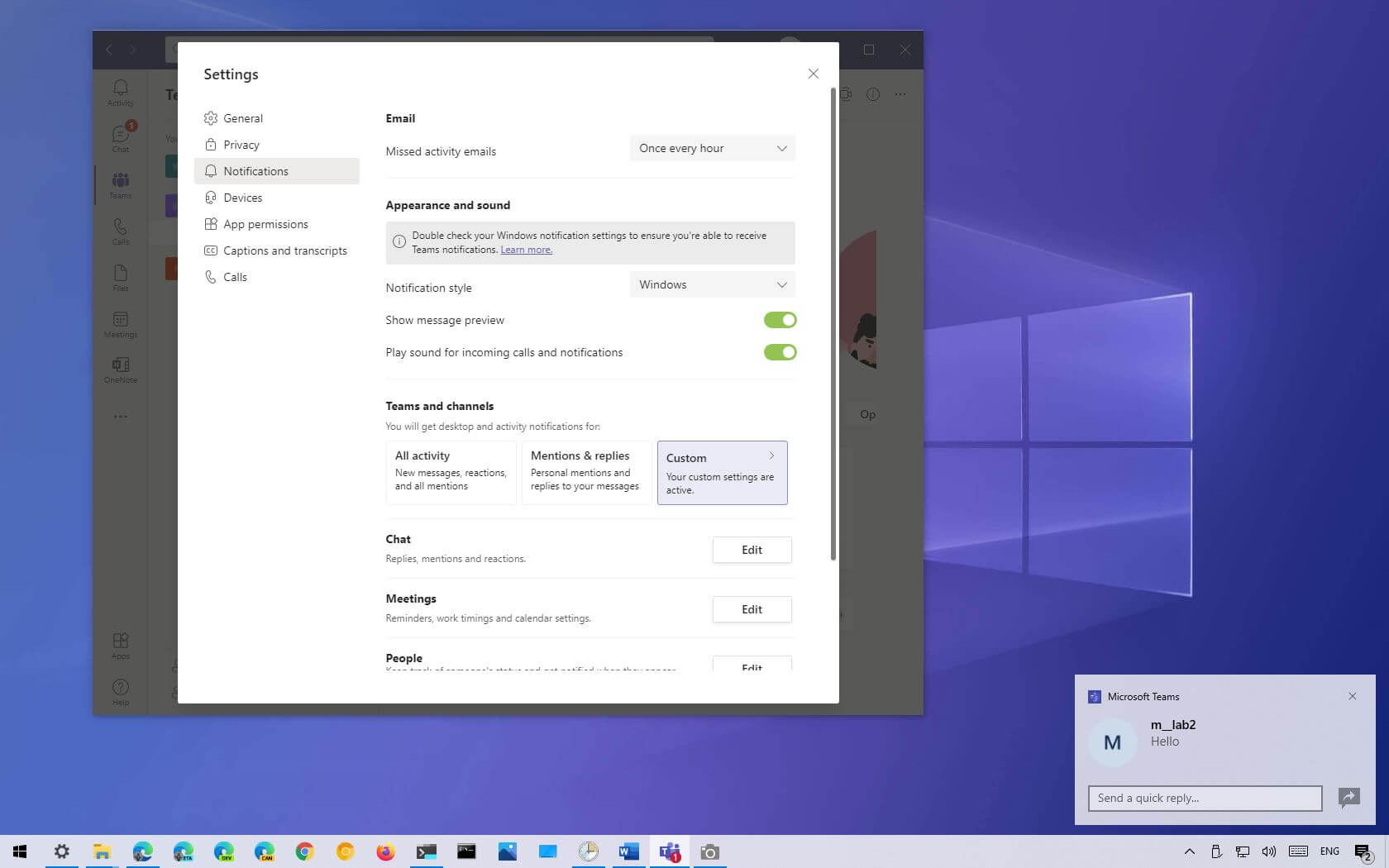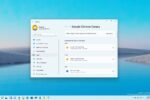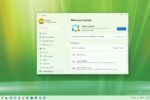The desktop edition of Microsoft Teams now supports two notification styles: Windows 10-style toast notifications and the classic experience incorporated into the app.
The ability to control notifications via the Settings app and Action Center integration, as well as a more consistent visual experience across Microsoft Teams and the operating system, are the most obvious advantages of this move.
You can find out how to enable or disable the Windows 10 notification style for Microsoft Teams in this tutorial.
-
Enable Windows 10 notification style on Microsoft Teams
-
Disable Windows 10 notification style on Microsoft Teams
Enable Windows 10 notification style on Microsoft Teams
Follow these steps to enable Teams’ native notification style:
Microsoft Team on Windows 10 is open.
To access the main menu, click the icon for your account.
In the Settings option, select it.
Settings for Microsoft Teams
Select “Notifications.”
Choose the Windows option from the Notification style menu under the Appearance and Sound section.
Windows alerts for Teams
(Optional) To view a preview of new communications, use the Show message preview toggle switch.
(Optional) If you would like to hear a notification sound, turn on the Play sound for incoming calls and notifications toggle switch.
After you follow the instructions, alerts you get in Microsoft Teams will show up in the Action Center and as native toast notifications.
Disable Windows 10 notification style on Microsoft Teams
Follow these instructions to turn off Windows 10 style notifications and return to Teams style messages:
Teams on OpenMicrosoft.
To access the main menu, click the icon for your account.
In the Settings option, select it.
Settings for Microsoft Teams
Select “Notifications.”
Choose the Teams built-in option from the Notification style menu under the Appearance and Sound area.
Teams turn off Windows alerts.
Once you’ve finished the steps, Microsoft Teams will display notifications using its default interface.
Although the feature is also available for macOS, we are concentrating on Windows 10 in this post.



